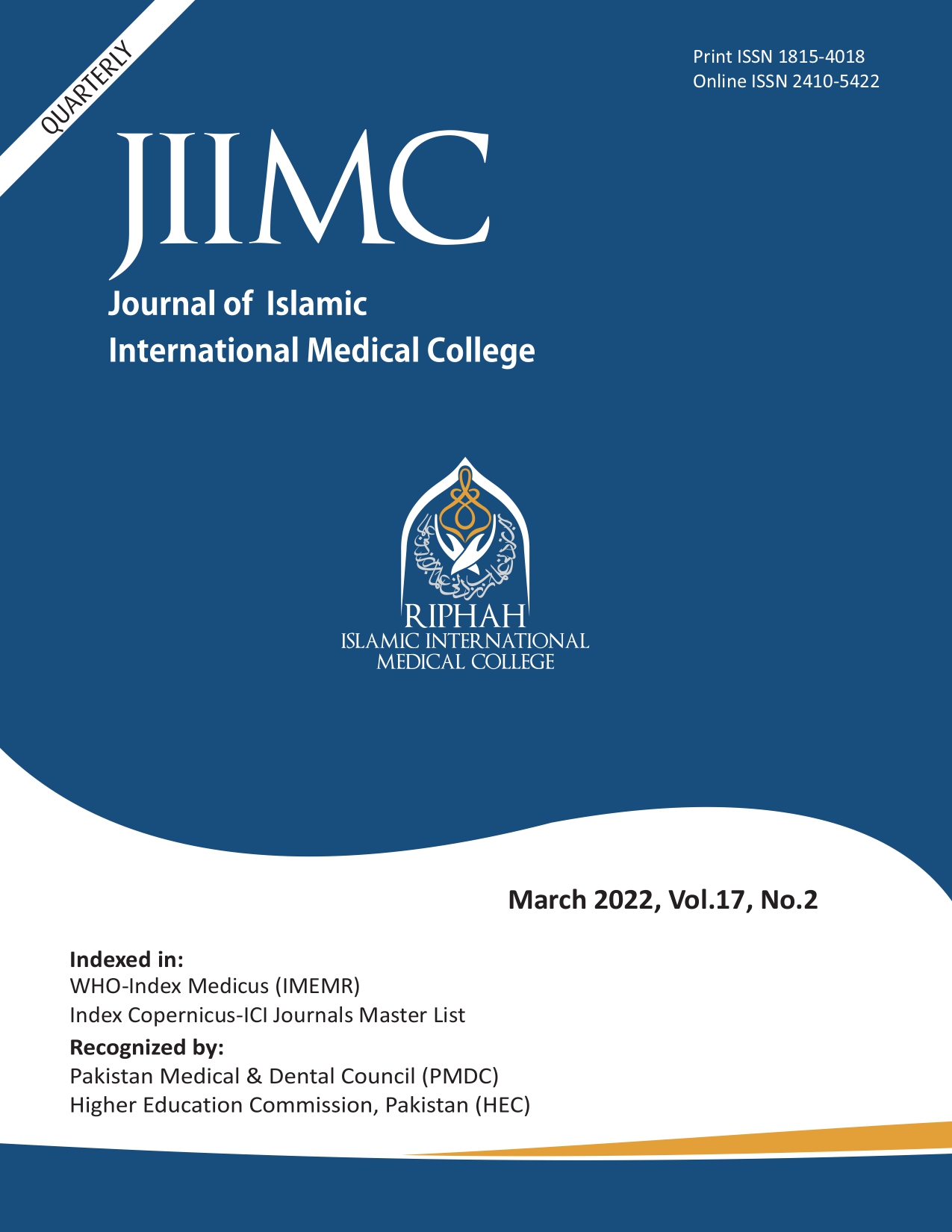Effects of Mulligan Traction Straight Leg Raise Versus Passive Straight Leg Raise in Lumbar Radiculopathy Patients
Abstract
Objective: To compare the effects of Mulligan traction straight leg raise and passive straight leg raise in patientsVwith lumbar radiculopathy.
Study Design: Randomized Control Trial.
Place and Duration of Study: The study was conducted from 2 February 2017 to 30 June2017 at NationalVInstitute of Rehabilitation Medicine, Islamabad.
Materials and Methods: A total of 38 patients of either gender with age range of 40 to 60 years with low back pain and lumbar radiculopathy were recruited in the study and they were randomly allocated in to two groups through lottery method, Traction straight leg raise, and Passive straight leg raise group. Patients with spinal surgeries and fractures were excluded from the study. Conventional physiotherapy treatments including transcutaneous electrical nerve stimulation, hot pack, stretching and strengthening exercises were given to all
patients. Traction Straight leg raise Technique was performed on patients of experimental group and Passive Straight leg raise was performed on control group. Patients were assessed on baseline and after 4 weeks through Numeric pain rating scale, Oswestry disability index, and goniometer. Treatment duration was of 4 weeks with 2 sessions per week.
Results: Mean age of all patients was 53.60 ± 3.82. Experimental group showed much reduction in pain with pre median =6(1) and post median=2(1) as compared to control group pain with pre median= 6(1) and post median=4(1) on pain scale. Traction Straight leg raise also showed significant improvement in Range of motion with pre median=50(10) and post median=70(10) of experimental group as compared to SLR of control group with pre median= 50(15) and post median= 60(10). Statistically both groups showed improvement, but experimental group improvement was more significant.
Conclusion: Traction straight leg raise is more effective than Passive straight leg raises in decreasing pain and improving range of motion in patients with lumbar radiculopathy.


